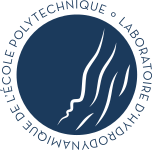
Lutz Lesshafft
Research Director at the CNRS
Adjunct Professor at École Polytechnique
Ars longa

Research topics
Shear flow instabilities
The dynamics of shear flows are generally driven by hydrodynamic instabilities, in laminar as well as in turbulent flow conditions. The physical nature of these instabilities can be examined from the linear equations of motion. In recent years, we have investigated the instability dynamics of jets, wakes, plumes and turbidity currents.
In many of these flow problems, the classical Kelvin-Helmholtz mechanism, which causes the instability of free shear layers, is enhanced by the effects of density variations. Light jets display self-excited behavior due to the destabilizing action of the baroclinic torque. Plumes experience an instability that relies on the interplay between buoyancy and shear effects. In turbidity currents, i.e. sediment-laden gravity currents in the oceans, trapped internal waves arise due to density stratification, and these may shape patterns in the sediment deposit. Our research focuses on the analysis of such fundamental phenomena, and on the description of their consequences in environmental and industrial contexts.
Jet noise
According to a widely accepted paradigma, noise from subsonic jets has two distinct sources: coherent structures ("wavepackets"), which are linked to large-scale instability dynamics, radiate low-and medium-frequency sound at small angles from the jet axis, whereas incoherent small-scale turbulence radiates perpendicular to the jet axis. In the Cool Jazz project, we focus on the first of these two mechanisms. Instability analysis is used to characterise deterministic and stochastic coherent jet dynamics, as well as the associated noise generation.
Instability analysis methods
One important
criterion in the analysis of open shear flow instability is the
distinction between endogenous (intrinsically driven) and exogenous
(externally driven) flow oscillations. We are currently exploring
new methods to characterise the physical mechanisms in both regimes
that give rise to the growth of perturbations in any given flow
setting. Key questions are: a) Which terms in the flow equations
contribute most to temporal or spatial growth, and to the selection
of intrinsic frequencies? b) How can global feedback effects
(through acoustic waves or instantaneous pressure feedback) be be
reliably detected?
